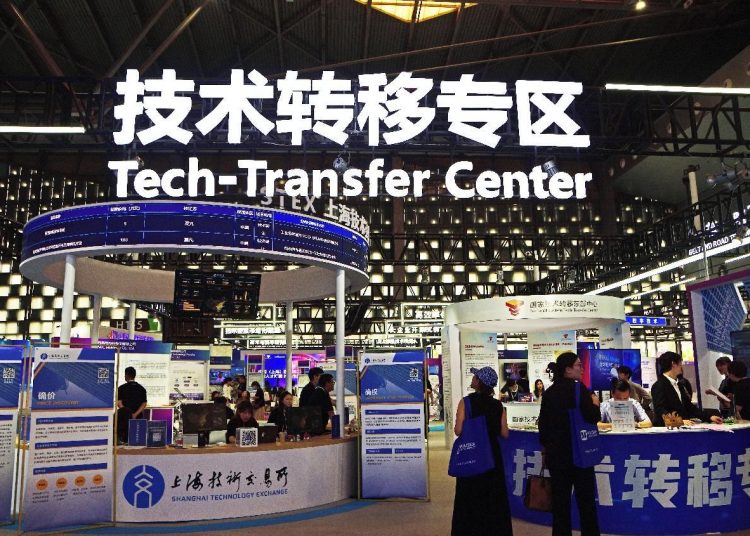By Gu Yekai, People’s Daily
The Yangtze River Delta region in east China, one of the country’s economic hubs, boasts high economic vitality, high-level opening up and strong innovation capability. It holds nearly 1/3 of China’s valid patents and a quarter of the country’s valid registered trademarks.
The region enjoys full-chain circulation of intellectual property rights (IPR) factors, which contributes to its high-quality development.
So far, the region has nurtured over 1,800 demonstration enterprises with intellectual property advantages, which drive the comprehensive improvement of the region’s industrial competitiveness. Centering on integrated circuits, biomedicine, artificial intelligence and other key areas, the region established seven industrial IPR operation centers and 24 national-level patent navigation service bases to achieve breakthroughs in core technologies.
Last year, the amount of patent pledge financing in the region jumped 72.6 percent year on year to 186.26 billion yuan ($26.05 billion), accounting for nearly half of China’s total. Besides, the region is also home to 29 national-level IPR protection centers and fast-response IPR service centers, as well as over 400 mediation organizations for IPR disputes.
Focusing on improving mechanisms, smoothening the flow of factors, strengthening protection, optimizing services and deepening reforms, the China National Intellectual Property Administration (CNIPA) is promoting the high-quality integrated development of the Yangtze River Delta with IPR improvement, said Liang Xinxin, spokesperson of the CNIPA.
The three provinces and Shanghai municipality in the Yangtze River Delta region have established complete cooperation mechanisms and made a lot of explorations in strengthening IPR protection, optimizing the business environment and serving market entities, Liang added.
Over recent years, a series of new mechanisms and models related to IPR have been piloted in the region, and achieved positive results.
In Jun 2021, China’s newly amended Patent Law entered into effect, which has added stipulations on a new patent open licensing system. According to the law, after a patentee declares to the patent administrative department to grant an open license and specify the royalty, anyone can exploit the patent in accordance with conditions during the implementation period of the open license.
In May 2022, Shanghai took the lead to pilot the open license. “Open license has built a bridge for universities, research institutions and small- and medium-sized enterprises (SMEs) to transfer and commercialize their achievements,” said Rui Wenbiao, head of Shanghai Intellectual Property Administration.
According to Rui, 50 enterprises and institutions in Shanghai have opened 240 patents, and 58 of them are free of charge. The city has introduced 610 patents opened by patentees outside of Shanghai, including Tsinghua University. Shanghai Jiao Tong University has reached a 10-million-yuan deal of an open license with an enterprise, Rui said.
The mechanism of the patent open license is just a miniature of the institutional innovation made by the Yangtze River Delta in IPR.
In April 2023, Hefei of Anhui province issued the first intellectual property securitization for SMEs that feature specialization, refinement, uniqueness and innovation in the region, with a scale of 123.5 million yuan.
Zhejiang province, which is adjacent to Anhui, took the lead in undertaking a pilot reform of the data IPR. It has launched China’s first public deposit platform for data IPR, and issued the country’s first rule for data IPR protection for open-source communities and first pledge standard on data IPR, so as to make data ownership clearer, better exploit IPR and make proofing of IPR easier, said Gu Wenhai, deputy director of Zhejiang province’s intellectual property administration.
China’s first national pilot project for the standardization of data IPR also landed in Zhejiang, Gu told People’s Daily.
Boehringer Ingelheim, a German multinational pharmaceutical company, owns patents of its self-developed innovative medicines in its Shanghai office.
“We feel the importance attached by the Chinese government to IPR protection and to maintaining fair market competition,” said an executive of the company.
As the number of patents owned by foreign enterprises in China keeps growing, IPR is contributing significantly to the high-level opening up of the country.
In the Yangtze River Delta region, Shanghai has launched a special campaign for the protection of foreign companies’ IPR for three years in a row, during which over 60 IPR disputes and infringement cases were handled.
Shanghai, in collaboration with intellectual property departments from Jiangsu, Zhejiang and Anhui provinces, has carried out regular dialogues and exchanges for foreign enterprises to understand their demands for IPR protection, and inform them of IPR laws, regulations, services and measures.
To assist China’s high-level opening up, the CNIPA launched pilot programs aiming at establishing permanent representative offices of foreign patent agencies in IPR service clusters, including the Suzhou New District and the Jiangning district of Nanjing, Jiangsu province, building them into international hubs of IPR services,” said Liang.













